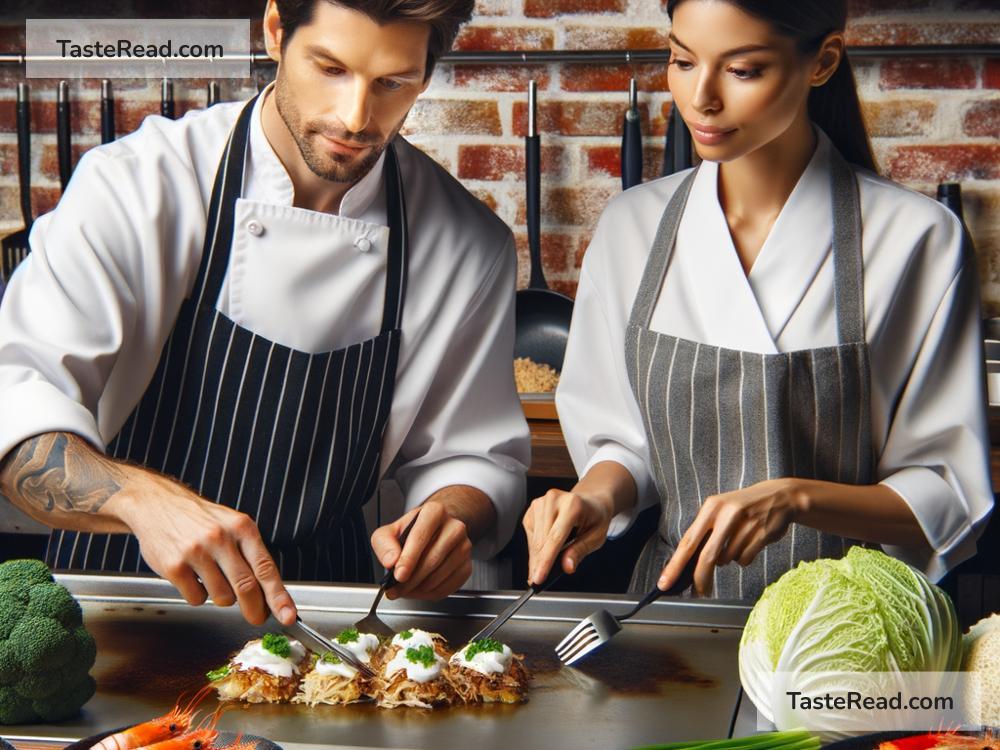Why Japanese Okonomiyaki is a Savory Delight
Japanese cuisine often brings sushi and ramen to the minds of many, but beyond these popular dishes lies a hidden gem that is bursting with flavors and textures. This savory delight is known as Okonomiyaki, a unique and versatile dish that truly embodies the heart and soul of Japanese street food.
Okonomiyaki, roughly translated, means “grilled as you like it.” This essentially captures the spirit of the dish – a customizable pancake that allows for a variety of ingredients, making each experience a new adventure. It’s a comforting mix of simple ingredients turned into something extraordinarily delicious and exciting.
The Genesis of Okonomiyaki
Okonomiyaki’s roots can be traced back to the Osaka and Hiroshima regions of Japan, each offering their own twist on the dish. It evolved from a dish called ‘funoyaki’—a simple mixture of flour and water cooked on a griddle, which was popular during the Edo Period (1603-1868). Today, Okonomiyaki reflects a more modern and complex flavor profile, incorporating a wider array of ingredients, including meats, seafood, and vegetables, all held together with a wheat-flour batter.
What Makes It Unique
At its core, Okonomiyaki is all about customization and versatility. While there are traditional ingredients like cabbage, green onion, egg, and meat (often pork or seafood), you’re by no means limited to these. From cheese and mochi to kimchi and corn, the possibilities are truly endless. This freedom allows for a personal touch in every pancake, making it a hit in both restaurants and homes across Japan.
Moreover, the preparation of Okonomiyaki is almost as enjoyable as eating it. In many restaurants, diners gather around a large griddle in the middle of the table, watching as their meal sizzles to perfection. This interactive experience brings people together, creating a warm and memorable dining experience.
The Hiroshima vs. Osaka Style
It’s important to note the two main styles of Okonomiyaki: Hiroshima and Osaka (also known as Kansai) style. The primary difference lies in the preparation.
In Osaka, the ingredients are mixed together before being grilled. This results in a more homogeneous pancake where the flavors meld beautifully together.
Hiroshima style, on the other hand, involves layering the ingredients, with heaps of cabbage on the bottom, followed by noodles (usually yakisoba or udon), and then topped with a fried egg. This method creates a delightful contrast in textures and flavors that makes Hiroshima-style Okonomiyaki a unique treat.
The Toppings: The Final Touch
What truly sets Okonomiyaki apart are the toppings. Once the pancake is perfectly cooked, it’s typically smothered in a rich, sweet-savory sauce that’s similar to Worcestershire but thicker and sweeter. A generous drizzle of creamy Japanese mayonnaise, a sprinkle of fragrant aonori (green seaweed powder), and a handful of crispy katsuobushi (bonito flakes) complete the dish. These toppings add layers of umami, making every bite a complex symphony of flavors.
A Dish That Brings People Together
Okonomiyaki does more than just satisfy hunger; it creates an experience. Whether it’s the communal cooking at a restaurant or the creativity of making it at home, this dish has a way of bringing people together. It’s a celebration of flavors, textures, and the joy of sharing a meal.
Why Okonomiyaki is a Must-Try
For those who enjoy exploring different cuisines, Okonomiyaki offers a unique taste of Japan’s rich culinary landscape. It’s a dish that demonstrates simplicity and complexity can go hand in hand, creating something truly delightful. Its comforting, hearty nature makes it perfect for any meal, while its versatility caters to a wide range of palates and preferences.
In essence, Okonomiyaki is more than just food; it’s a culinary adventure that reflects the ingenuity and warmth of Japanese cuisine. So next time you have the chance, delve into the savory world of Okonomiyaki and experience the joy of this delightful Japanese dish for yourself. You’ll find that it’s not just about eating but about crafting and sharing moments—a savory delight that goes beyond taste.


